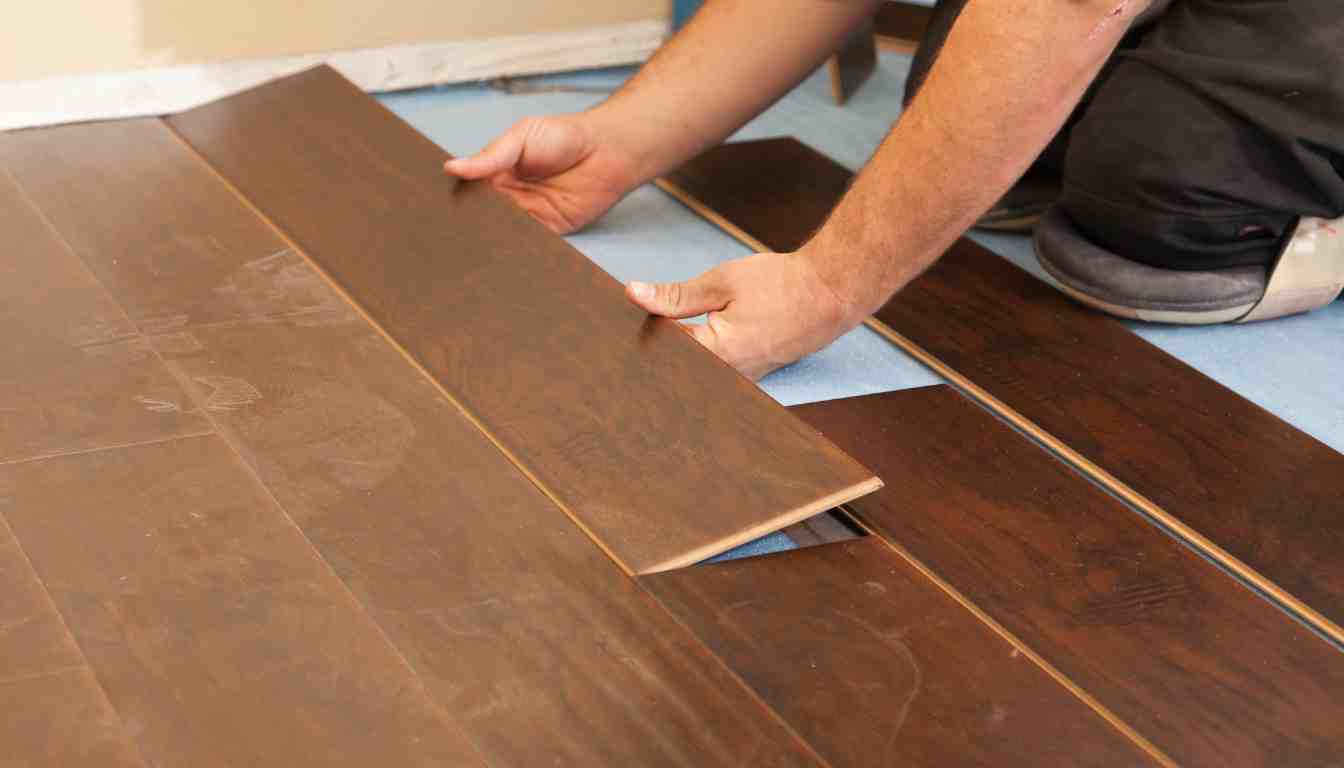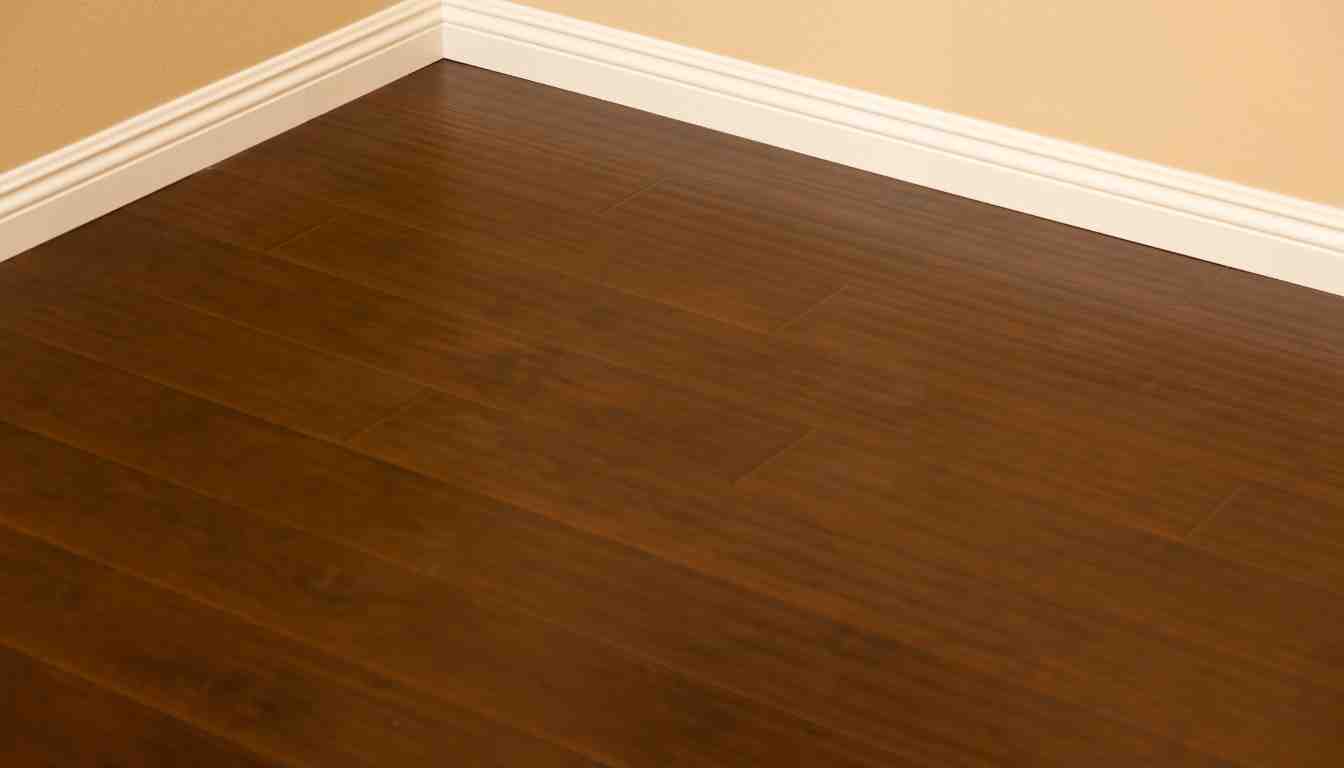Yes, you can stain laminate flooring. However, there are certain considerations and precautions you need to keep in mind before proceeding with staining laminate flooring.
Laminate flooring consists of multiple layers, including a protective top layer that is resistant to scratches and stains. Therefore, you need to ensure the presence of a compatible stain for laminate flooring and prepare the surface properly by cleaning and sanding it.
It is also crucial to test the stain in an inconspicuous area before applying it to the entire floor. Additionally, applying a clear protective coat after staining can help maintain the longevity of the finish. Following these steps will help you achieve the desired appearance while protecting the laminate flooring from damage.
Understanding Laminate Flooring
Laminate flooring cannot be stained as it has a protective layer that prevents absorption. However, there are various ways to enhance its appearance, such as using floor markers or adding rugs to complement your decor.
Laminate flooring is a popular choice for many homeowners due to its affordability, durability, and aesthetic appeal. Whether you’re renovating your home or simply looking to upgrade your flooring, understanding the basics of laminate flooring is essential to make an informed decision. In this section, we will explore what laminate flooring is made of and discuss the advantages and disadvantages of this versatile flooring option.

What Is Laminate Flooring Made Of?
Laminate flooring is composed of multiple layers that work together to create its unique properties. Understanding these layers can help you appreciate the durability and functionality of laminate flooring:
- Wear Layer: The top layer of laminate flooring is the wear layer, which is designed to withstand daily wear and tear. This layer is typically made of aluminum oxide or melamine resin, providing protection against scratches and fading.
- Decorative Layer: Beneath the wear layer is the decorative layer, which gives the laminate flooring its realistic appearance. This layer is a high-resolution image of hardwood, stone, or tile, providing the desired aesthetic without the high cost and maintenance.
- Core Layer: The core layer of laminate flooring is responsible for its strength and stability. It is made from high-density fiberboard (HDF) or medium-density fiberboard (MDF). This layer enhances the durability of the flooring and prevents warping or swelling due to moisture exposure.
- Backing Layer: The bottom layer of laminate flooring is the backing layer, which provides stability and moisture resistance. It is typically made of melamine or plastic, protecting the flooring from moisture that can seep through the subfloor.
Advantages And Disadvantages Of Laminate Flooring
Like any flooring option, laminate flooring has its pros and cons. Before making your decision, it is essential to consider these factors:
| Advantages | Disadvantages |
|---|---|
| 1. Cost-effective: Laminate flooring is an affordable alternative to hardwood or stone, making it a budget-friendly option for homeowners. | 1. Limited refinishing: Unlike hardwood, laminate flooring cannot be refinished. If it gets heavily damaged, the entire floor may need to be replaced. |
| 2. Durability: The wear layer and core layer of laminate flooring make it resistant to scratches, stains, and fading. It can withstand heavy foot traffic, making it suitable for busy areas of the house. | 2. Moisture sensitivity: While laminate flooring is moderately water-resistant, excessive moisture can still cause damage. It is not recommended for bathrooms or areas prone to water spills. |
| 3. Easy installation: Laminate flooring often features a click-and-lock system, allowing for straightforward installation without the need for glue or nails. | 3. Limited design options: While laminate flooring comes in various designs, it may not offer the same range of choices as natural hardwood or stone. |
Understanding the advantages and disadvantages of laminate flooring can help you determine if it is the right choice for your home. Consider your budget, lifestyle, and desired aesthetic before making a final decision.

Staining Laminate Flooring
Thinking of staining your laminate flooring? Many homeowners are looking for ways to update their flooring without the cost and hassle of replacing it entirely. Fortunately, it is possible to stain laminate flooring, giving it a fresh new look. In this article, we will explore the process of staining laminate flooring, the considerations to keep in mind, and the step-by-step guide on how to achieve the desired results.
Is It Possible To Stain Laminate Flooring?
A common question that homeowners have is whether it is actually possible to stain laminate flooring. The answer is yes! While laminate flooring is known for its durability and resistance to staining, it is designed to have a specific appearance that cannot be altered through traditional staining methods. However, with the right products and techniques, it is possible to stain laminate flooring and revamp its look.
Considerations Before Staining
Before diving into the staining process, there are a few considerations to keep in mind:
- Is your laminate flooring in good condition? Staining works best on laminate flooring that is in good condition without any signs of wear or damage.
- Do you know the type of laminate flooring you have? Not all laminate flooring is suitable for staining. Check the manufacturer’s recommendations or consult a professional to determine if your laminate flooring is compatible with the staining process.
- Are you prepared for the maintenance? Stained laminate flooring may require regular maintenance and touch-ups to ensure its longevity. Consider whether you are willing to invest the time and effort into maintaining your stained flooring.
Step-by-step Process Of Staining Laminate Flooring
Now that you’ve considered the important factors, let’s dive into the step-by-step process of staining your laminate flooring:
- Clean the floor: Start by thoroughly cleaning the laminate flooring, ensuring it is free from dust, dirt, and any residues. Use a laminate floor cleaner and a microfiber mop to achieve a clean surface.
- Remove the protective layer: Some laminate flooring comes with a protective layer that will need to be removed before staining. Follow the manufacturer’s instructions to remove this layer if applicable.
- Apply the stain: Choose a high-quality wood stain that is specifically designed for laminate flooring. Apply the stain evenly using a lambswool applicator or a soft cloth, following the grain of the laminate. Start in a small, inconspicuous area to ensure you are satisfied with the color.
- Wipe off excess stain: After applying the stain, use a clean cloth to wipe off any excess. This will help to prevent streaks and uneven coloring.
- Allow the stain to dry: Give the stain ample time to dry before walking on the floor or applying any sealant. Follow the instructions on the stain product for the recommended drying time.
- Apply a sealant: To protect your stained laminate flooring and enhance its durability, consider applying a laminate floor sealant. Choose a sealant specifically designed for laminate flooring and apply it according to the manufacturer’s instructions.
- Maintain and touch up as needed: Regularly clean and maintain your stained laminate flooring to keep it looking its best. Additionally, be prepared to perform touch-ups or re-stain areas that may show signs of wear over time.
Staining laminate flooring can be a cost-effective way to update the look of your space. By considering the important factors and following the step-by-step process outlined above, you can achieve beautiful results and enjoy your newly stained laminate flooring for years to come.
Conclusion
Staining laminate flooring is not recommended due to its synthetic nature and lack of porous surface. However, if you are determined to change the appearance of your laminate flooring, there are alternative options such as using paint or vinyl stickers.
It’s vital to carefully consider the potential risks and drawbacks before proceeding with any staining or altering methods. Ultimately, maintaining the original finish and choosing appropriate cleaning and maintenance techniques will ensure the longevity and aesthetic appeal of your laminate flooring.


